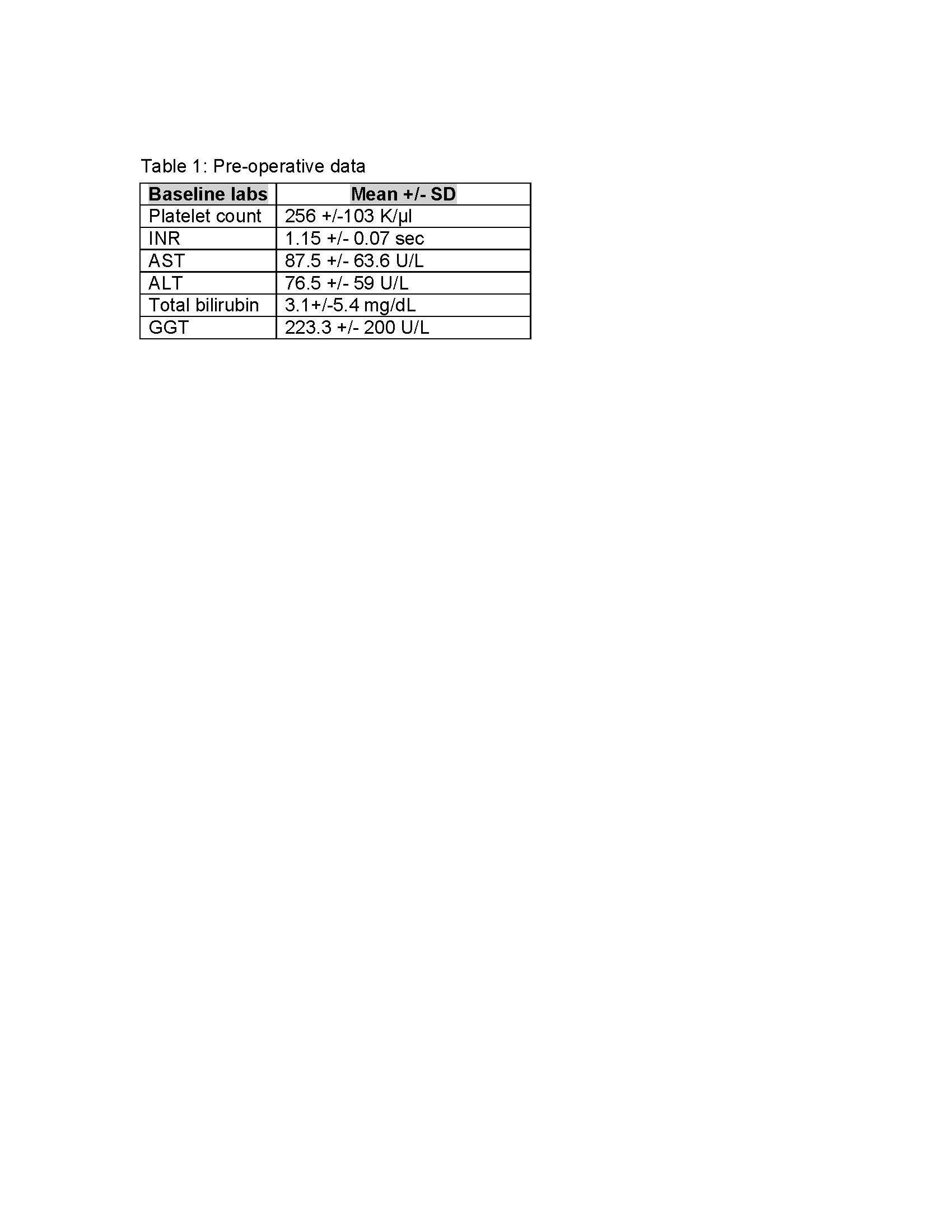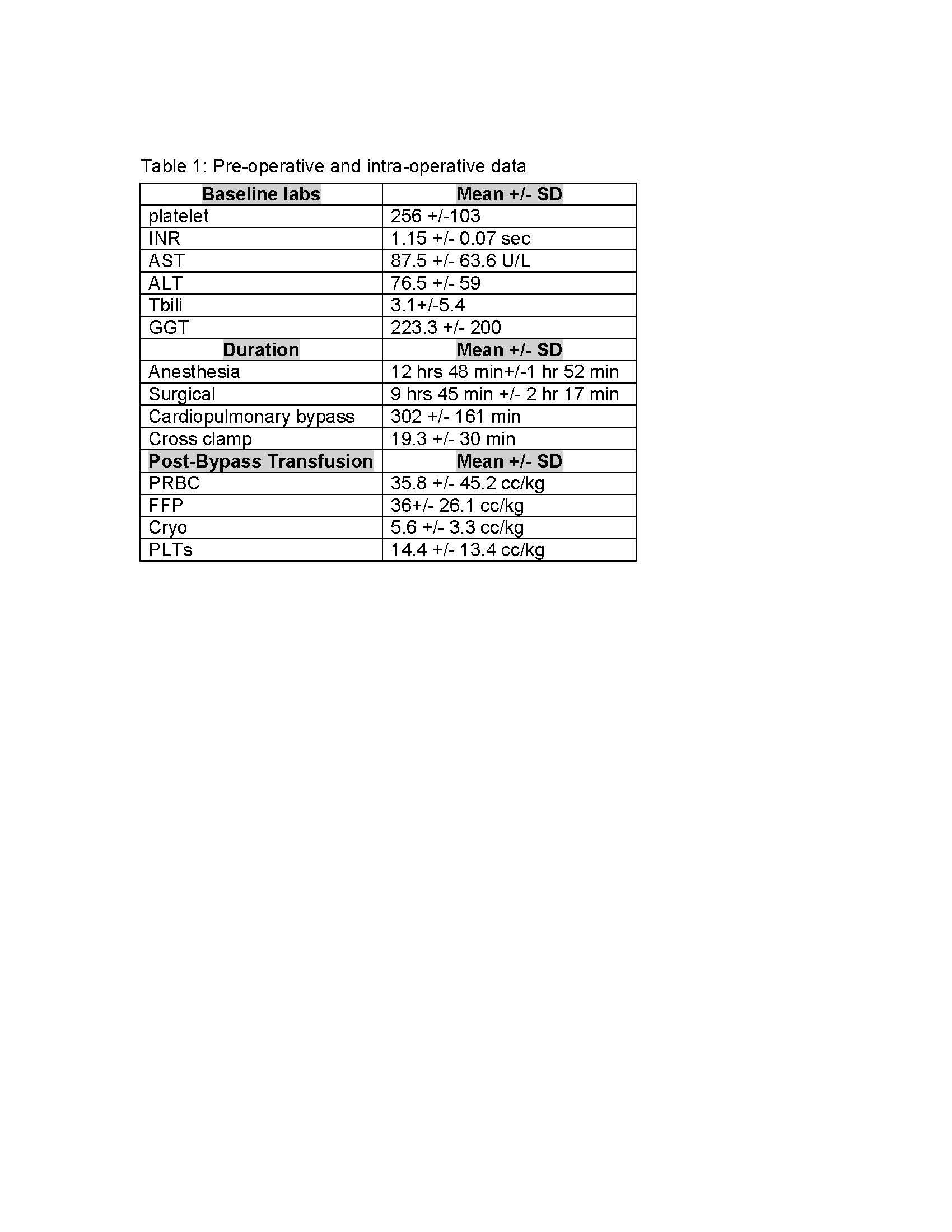NM-274
Anesthesia and Alagille Syndrome
1Wise-Faberowski L, 1Irvin M, 2Gaitonade A, 1Mendoza J, 1McIlhinney D, 1Ramamoorthy C
1Stanford University/Lucile Packard Children's Hospital, Palo Alto, CA, USA; 2Tufts University, Boston, MA, USA
Background:
Alagille syndrome is a rare genetic disorder that can have cardiac and/or liver manifestations. Peripheral pulmonary stenosis occurs in 90% of these patients thus requiring open-heart surgery and cardiopulmonary bypass. The paucity of intrahepatic bile ducts causes hepatic dysfunction sometimes necessitating liver transplantation. As a tertiary referral center for these patients, we describe our anesthetic experience.
Methods:
After IRB approval, a retrospective chart review (2004-2017) was performed in our total series of 31 Alagille patients undergoing 58 surgical procedures (50 cardiac; 8 liver transplant).
Results:
The majority (21/31 patients) of patients undergoing cardiac surgery procedures were male. The mean age was 3.4 +/- 1.6 years and the mean weight 13.8 +/- 12.7 kg. Only 1 patient had both procedures, a cardiac surgery procedure first and later, liver transplantation. The majority of cardiac surgery procedures (23/50) were unifocalization/pulmonary artery reconstruction and all cardiac surgery procedures required cardiopulmonary bypass except for 1 (coarctation of the aorta). As expected, the majority of patients had a greater defect in biliary excretion rather than hepatic metabolism and synthesis (Table 1). Most patients underwent mask induction and were maintained with fentanyl (62.3 +/- 72.6 mcg/kg/case) and another agent. Anesthetic duration was 12 hrs 48 min +/- 1 hr 52 min with NIRs values 65.3 +/- 14.8. Transfusion was massive (92 +/- 88 cc/kg blood product and 12 patients received FEIBA) (Table 2). Most patients arrived to the CVICU on a fentanyl infusion and another agent and were ventilated 107 +/- 106 hrs. There were 3 deaths, 0 within 48hrs and 1 within 30 days. There were 4 complications: 3 ECMO and 1 infection.
Discussion:
This is the first case series of Alagille patients undergoing cardiac and/or liver transplant surgery. Though there were no anesthetic complications, surgical procedures were long and complications, especially mortality (~10%), are higher when compared to similar surgical procedures in non-Alagille patients (1.6%).
Top













